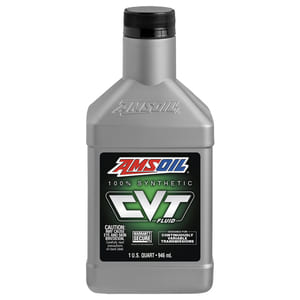Ever wondered why some cars boast smoother acceleration and better fuel efficiency than others of similar size and power? The secret might lie in the type of transmission they use – specifically, the continuously variable transmission, or CVT. This nifty piece of engineering has been revolutionizing the way our vehicles manage power, making drives not just more efficient but also a lot more enjoyable. Today, let’s dive into the world of CVT transmissions, uncovering what exactly they are, how they operate, and why they’re increasingly becoming the transmission of choice in modern vehicles.

Understanding CVT Transmission
CVT Transmission Definition
At its core, the CVT transmission definition stands as a beacon of automotive innovation. Unlike traditional automatic or manual transmissions that rely on a set number of gears to transfer power from the engine to the wheels, a CVT uses variable-diameter pulleys and a belt or chain. This ingenious setup offers an unlimited range of effective gear ratios, ensuring the engine operates at its most efficient speed regardless of how fast the vehicle is moving. Imagine having a magical gearbox that adjusts on the fly to provide the perfect balance between power and efficiency – that’s a CVT for you.
How CVT Gearbox Works
A CVT gearbox is literally the definition of smooth operation. It functions without the stepped gear ratios of conventional transmissions. Instead, it employs a belt or chain that runs between two pulleys, which can change their diameter. This ability to alter diameters on the go means the CVT can seamlessly adjust its gear ratio to optimize engine speed and power delivery. The result? Enhanced fuel efficiency and a buttery smooth acceleration that traditional transmissions can only dream of achieving.

Functioning of CVT Transmission
CVT Operation Process
The magic behind the CVT lies in its operation process. By modifying the diameter of its pulleys, the CVT can shift the belt’s position, effectively changing the gear ratio without the need for gears. This is done through a sophisticated control system that interprets data from various sensors, adjusting the pulleys to match the best gear ratio for the current driving conditions. Whether you need more power for acceleration or better fuel economy at high speeds, the CVT automatically finds the sweet spot, making your drive as efficient as it is smooth.
Optimizing CVT Performance
While the CVT brings numerous benefits, maintaining its performance is key to ensuring longevity. This is where products like AMSOIL Synthetic CVT Fluid come into play. Specially formulated to combat wear and extend the life of the transmission, this synthetic fluid proves its value by significantly reducing wear in the steel CVT belt, even under the toughest conditions. By keeping the CVT well-lubricated and protected, drivers can enjoy the full range of benefits this technology offers without worrying about premature wear and tear.
Pros and Cons of CVT Transmission
Advantages of CVT
The list of CVT benefits is impressive, with improved fuel efficiency, smoother acceleration, and lower emissions leading the charge. These advantages stem from the CVT’s ability to keep the engine operating at its optimal power range, regardless of the vehicle’s speed. This not only makes for a more enjoyable drive but also aligns with the growing focus on environmental sustainability, making CVTs a popular choice for eco-conscious drivers and manufacturers alike.

Drawbacks of CVT
However, no technology is without its drawbacks. CVTs can come with a higher initial cost, potential reliability issues, increased noise levels during operation, and a different driving feel that may not appeal to all drivers. Despite these challenges, the benefits they offer, particularly in terms of efficiency and environmental impact, continue to drive their adoption in smaller vehicles.
Ensuring wear protection is crucial for optimizing the performance and longevity of CVT transmissions. A clear testament to this is the development of AMSOIL Synthetic CVT Fluid by a renowned synthetic oil manufacturer, AMSOIL. Designed specifically for the unique needs of CVT systems, this fluid underwent a rigorous 100,000-mile field test, outperforming a major vehicle manufacturer’s CVT fluid in minimizing wear on the steel CVT belt.
In conclusion, as we unravel the mysteries of CVT transmission, it’s clear that this technology holds a significant place in the future of automotive engineering. With its promise of optimal engine performance, enhanced fuel efficiency, and smoother drives, CVT is set to redefine our driving experiences. As advancements continue to refine and address the challenges of this innovative transmission type, we can expect to see CVTs playing an even more pivotal role in the evolution of modern vehicles.

